In Chapter Two of the novel, set in Sandgate Village, the Destined One encounters various Yaoguai including Lang-Li-Guhh-Baw, Earth Wolf, Second Prince of Flowing Sands, King of Flowing Sands and First Prince of the Flowing Sands
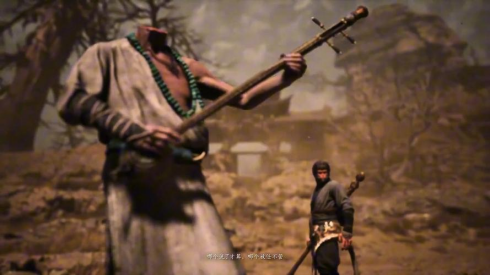
At the beginning of the second chapter of the game, a high-pitched and melodious session of Story-telling in Northern Shaanxi occurs. The player’s character, “the Destined One,” lies dying in the yellow sands, pierced by arrows, only to be saved by the headless Bodhisattva Lingji, who, by playing the strings of his instrument as he narrates, snatches life from the jaws of death. The singing is mournful, desolate, and thought-provoking.
The rich Chinese flair and robust Northern Shaanxi style, combined with the game’s graphics and storyline, astonish players worldwide. Many foreign game bloggers have praised its unique performance as a delightful surprise that brought them closer to the charm of traditional Chinese culture. Some netizens have commented that the integration of Story-telling in Northern Shaanxi elements into the game is nothing short of a stroke of genius, allowing players to experience the powerful appeal of Intangible Cultural Heritage within the gaming world.
The segment of Story-telling in Northern Shaanxi featured in “Black Myth: Wukong” was recorded in 2022, performed and played by Xiong Zhu Ying, a bearer of the intangible cultural heritage of Story-telling in Northern Shaanxi. Xiong recalls that when the game team approached him, they expressed a desire to fuse traditional Chinese culture with gaming, while highlighting the desert ambiance and advancing the plot. Indeed, Story-telling in Northern Shaanxi has not only greatly propelled the game’s narrative forward but has also provided a feast for the senses to gamers around the globe.
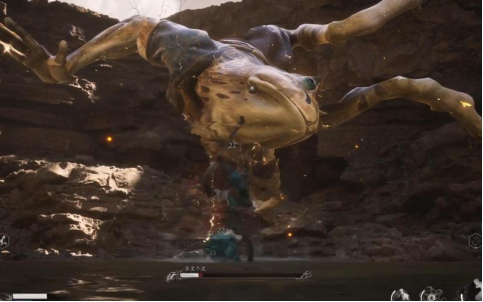
The Destined One encounters characters such as Lang-Li-Guhh-Baw, an original character in the game, who is a toad turned demon and serves as the leader of the Yaoguai at Yellow Wind Ridge. This character does not appear in the original “Journey to the West.” The name Lang-Li-Guhh-Baw resembles the minor demon Bapo’er Ben in the original, and, much like Baw-Li-Guhh-Lang from the previous chapter, is Game Science’s homage to “Journey to the West.”
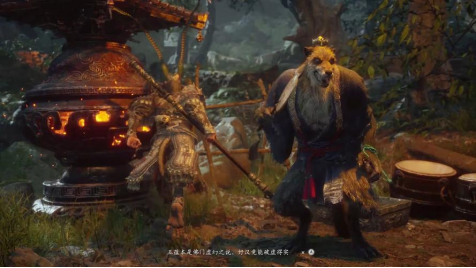
Next, the Destined One meets an NPC named “Xu Dog.” This exceptionally loyal companion can help players concoct elixirs, offer permanent attribute boosts via elixirs, and even periodically gift elixirs to players. Many players think of “Xu Dog” as a fox, due to its cunning voice. However, others have clarified the story of the Chinese Zodiac, pointing out that “Xu Dog” is indeed a dog (though it appears more fox-like in the game).
Interestingly, many players unfamiliar with ancient Chinese alchemists and elixir culture, coupled with “Xu Dog’s” dialogues that include terms like “Heaven and Earth/Qian Kun,” have led to the character being jokingly referred to as the “Chinese version of ‘Breaking Bad'” on international forums.
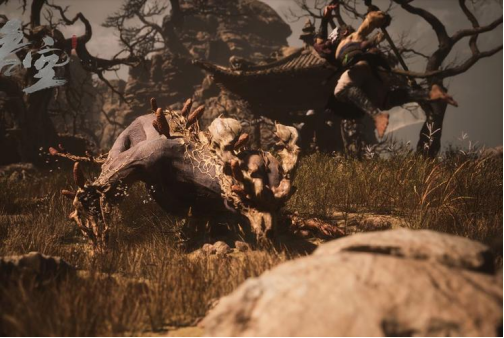
Moreover, some players argue that this misperception is partly due to cultural differences and partly due to the English translation of the game, where elixirs are translated as “pills.” In English, this term often refers to medicinal tablets or drugs. Therefore, it is suggested to change the translation from “pills” to “elixir.” According to the Cambridge Dictionary, “elixir” means a cure-all or a magical potion, which aligns better with the context and intended meaning.
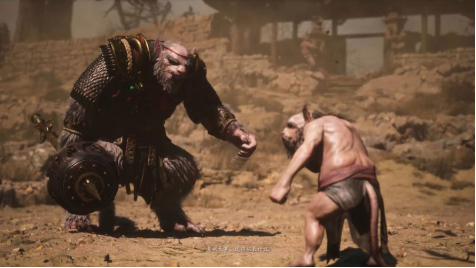
In the game, the Earth Wolf appears as the leader of the Yaoguai at Yellow Wind Ridge, a character not mentioned in the original *Journey to the West* and likely a creation unique to the game. Originally a slender dog raised by a militia commander, the Earth Wolf was resurrected after being buried in a desolate area behind the military camp that was overgrown with spiritual Ganoderma mushrooms, coupled with soldiers reciting scriptures there at night. This Yaoguai thus embodies a tragic figure, leading to the game’s line: “Approach the benevolent monster, but shun the vile man.”
Why do characters like the King of Flowing Sands, Second Prince of Flowing Sands, and First Prince of the Flowing Sands appear as mice in the game?
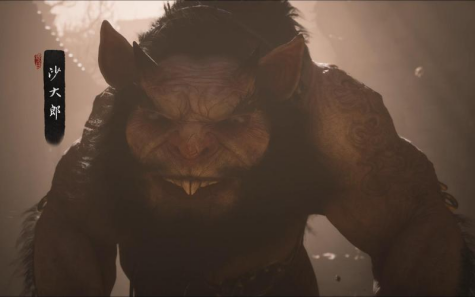
It turns out that Yellow Wind Ridge was once a very prosperous area outside the traditional borders, home to a Golden Buddha Country, also known as the Flowing Sand Country. The King of Flowing Sands was the ruler of this kingdom. His rule was eventually undermined by the spread of Buddhism, which led to the toppling of the political structure. In response, he ordered the demolition of temples, the destruction of Buddha statues, and the expulsion of monks, while the Flowing Sand Country was also renamed to Sihali Country. In the game, many decapitated Buddha statues can be seen, likely remnants of this period of anti-Buddhist activity.
After the Kingdom of Sahali ceased to worship Buddha, disaster struck the nation. A gigantic insect began to appear, devastating border villages and causing countless deaths and destruction. This creature brought chaos to the kingdom until it was vanquished by the Yaoguai “Yellow Wind Sage,” who had come from Mount Ling.
Consequently, the king honored the Yellow Wind Sage as the National Preceptor and issued a decree that all citizens should live among the Yaoguai. Following this, the eldest and second princes transformed into rats, and the third prince, furious, left home and disappeared without a trace. Eventually, every person in the nation, including the king himself, turned into rats, and slowly, the Kingdom of Sahali became the Kingdom of Rats, awaiting the arrival of the Destined One!
This transformation caused immense guilt in the Yellow Wind Sage, who felt that his defeat of the giant insect and the respect he received from the king of Sahali had led to the “rat transformation” disaster. Burdened by this guilt, he left the capital of Sahali and wandered to the Yellow Wind Ridge, returning to his true Yaoguai nature.
It was at Yellow Wind Ridge that the Yellow Wind Sage’s lieutenant, a tiger, captured Tang Seng, unwittingly continuing the story from the classic “Journey to the West.” Ultimately, the Yellow Wind Sage was subdued by Bodhisattva Lingji and brought back to his temple, allowing Tang Seng and his disciples to safely pass through Yellow Wind Ridge.
